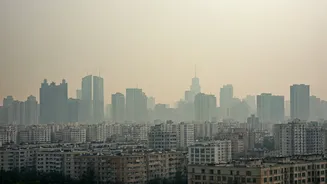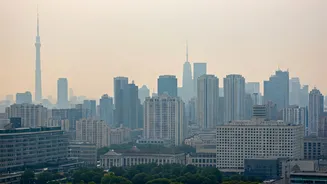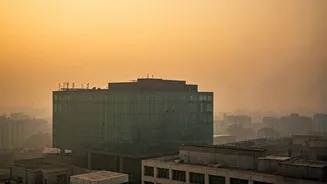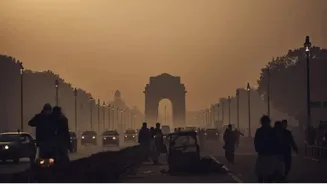Smog's Grim Grip
The skyline of Delhi is currently shrouded in a dense smog, a clear indication of a significant decline in air quality. Monitoring stations across the
city have recorded AQI levels that are alarmingly high, with over half of them exceeding the 400 mark. This is a severe threat, pointing towards a health emergency. The high AQI readings are a combination of several factors, including vehicle emissions, industrial activities, and seasonal influences like stubble burning in neighboring regions. The consequence is reduced visibility, and residents are exposed to hazardous air pollutants. This situation necessitates urgent intervention to protect public health and curb further environmental damage.
Health Hazards Unveiled
The elevated AQI levels pose severe health risks. The presence of particulate matter and other pollutants in the air can lead to respiratory problems, cardiovascular issues, and exacerbate existing health conditions. The elderly, children, and individuals with pre-existing ailments are particularly vulnerable. Exposure to such poor air quality over prolonged periods can lead to long-term health complications. The government and health authorities are advising residents to take precautions such as staying indoors, using air purifiers, and avoiding strenuous outdoor activities to mitigate exposure. The gravity of the situation emphasizes the need for immediate corrective action.
Addressing the Crisis
Addressing the smog crisis requires a multi-pronged strategy. The government has to implement stricter regulations on pollution-emitting sources. This includes controlling industrial emissions, promoting sustainable transportation options, and discouraging practices like crop residue burning. Public awareness campaigns are essential to educate citizens about the risks and the measures they can take to safeguard themselves. Technological solutions, such as air purifiers, also play a role in mitigating the impact. The long-term goal is to transition toward cleaner energy sources and improve infrastructure to reduce emissions. Addressing the root causes will necessitate coordinated efforts from various stakeholders, and this will be an ongoing effort.














